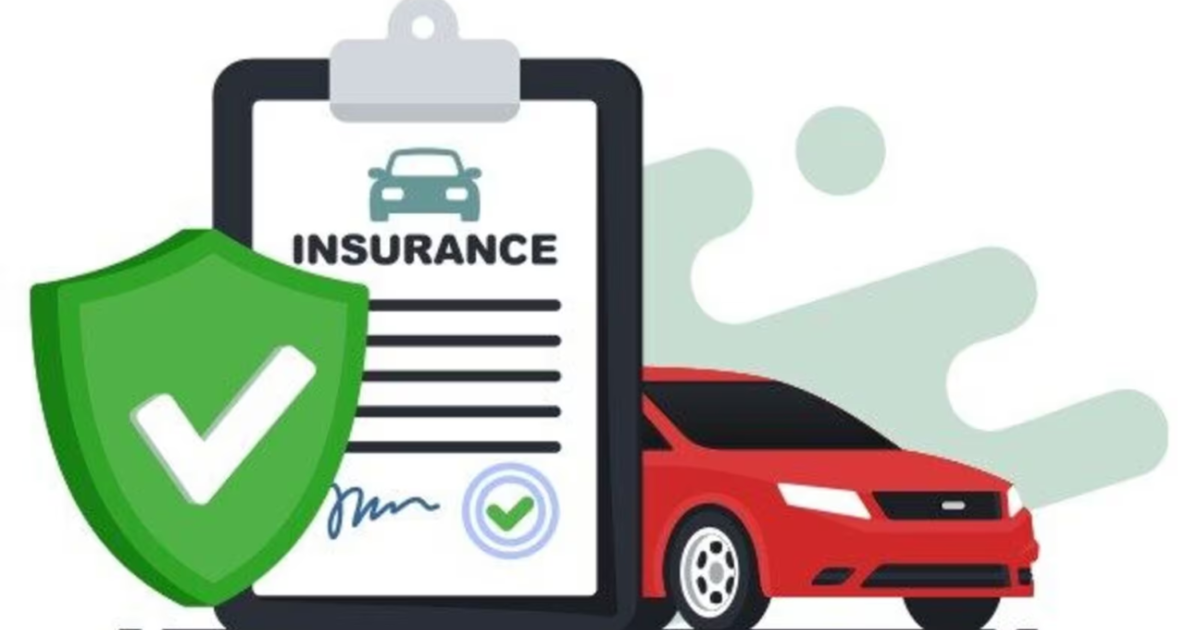Table of Contents
Introduction
Hey there, fellow drivers! We all know driving is like a daily adventure, and having car insurance is like having a superhero by your side for those unexpected twists and turns. But, hold on tight – because when it comes to understanding all the nitty-gritty details, like Engine Protection (EP), things can get a bit tricky. Don’t worry, though; we’re here to unravel the mystery and make it as clear as a green traffic light. Let’s dive into the world of car insurance in a way that’s easy to understand and maybe even a little fun!
Definition of EP in Car Insurance
Engine Protection, or EP, is a specialized addition to your car insurance. It covers the cost of repairing or replacing your car’s engine if it’s damaged due to non-accidental factors such as waterlogging or oil leakage.
Importance of Understanding EP
Understanding EP is crucial because it isn’t included in standard insurance policies. It’s an added extra, and knowing what it covers could save you significant repair costs.
Basics of EP in Car Insurance
Car insurance is a necessary safeguard for any driver. It offers financial protection against vehicular damage or injuries to other drivers, passengers, or pedestrians.
Overview of Car Insurance Policies
Car insurance policies come in various forms, with each offering different levels of protection. The three main types are third party only, third party fire and theft, and comprehensive.
Key Components of Car Insurance
The primary components of car insurance include the premium, policy limit, and deductible. The premium is your payment, the policy limit is the maximum the insurer will pay for a covered loss, and the deductible is the amount you pay out-of-pocket for a covered loss.
Types of Coverage
Coverage types typically include liability, collision, comprehensive, uninsured/underinsured motorist protection, and medical payments coverage. Each type protects you in different situations.
Excess Protection (EP) Explained
Excess protection is a unique aspect of car insurance that further safeguards your finances in the event of a claim.
What is Excess Protection (EP)?
EP is an optional cover that refunds your excess payment following a successful car insurance claim, helping to reduce out-of-pocket costs.
Role of EP in Car Insurance
EP in car insurance reduces your financial responsibility in the event of a claim. It can help you reclaim your compulsory or voluntary excess, depending on your policy.
How EP Differs from Other Coverage
Unlike other coverage types, EP specifically targets your excess payment, the money you agreed to pay towards a claim. This cover allows you to recoup this sum after a successful claim.
Significance of EP in Policy Terms
The significance of EP lies in its ability to lower the financial burden of a claim. It means that even after paying your excess, you won’t be left out of pocket, granting peace of mind.
Understanding Excess with EP in Car Insurance
Excess forms a crucial part of your insurance, affecting how much you pay when you make a claim.
Definition of Excess in Insurance
Excess is the amount you agree to pay towards a claim before the insurer starts paying. It’s split into compulsory and voluntary excess.
Different Types of Excess
The insurer sets compulsory excesse and can’t be changed, while voluntary excess is flexible. Increasing voluntary excess can lower premiums, but it means higher costs if you claim.
Excess Protection brings multiple benefits to the policyholders, primarily involving financial protection, cost savings, and flexibility in choosing extra levels.
The Concept of Voluntary and Compulsory Excess
Voluntary and compulsory excess work together to determine your overall excess. Understanding this balance can help you set a suitable premium and ensure your excess is affordable should you need to claim.
To Know More about EP
Video: https://youtu.be/Z8nmwWJK40k?si=noJWdtigu9GJKu9t
Benefits of EP in Car Insurance
Financial Protection for Policyholders Of EP in Car Insurance
Excess Protection provides an extra layer of financial safety by covering the agreed excess cost in case of a successful claim. This prevents policyholders from having to dip into their savings or face unexpected financial strain when making a claim.
Cost Savings in Case of a Claim with EP in Car Insurance
The cost savings stemming from EP are particularly noticeable in case of a claim. By covering the excess cost, EP helps policyholders save on out-of-pocket expenses, freeing up funds for other uses.
Flexibility in Choosing Excess Levels with EP in Car Insurance
EP gives policyholders the freedom to select higher excess levels without worrying about the financial impact of a claim. This can result in lower insurance premiums, providing further cost benefits.
When is EP Useful?
Understanding when EP comes into play is essential for making an informed decision about adding it to your insurance policy.
Scenarios Where EP Comes into Play
EP becomes useful in scenarios where a successful claim is made and an excess is paid. This could be due to an at-fault accident, a break-in, or other incidents covered by the policy.
Examples of How EP Can Mitigate Costs
For example, if a policyholder with a $500 excess has a claim approved for $2000, they would typically have to pay the first $500. With EP, the policyholder reclaims this $500, meaning the claim costs them nothing out-of-pocket.
Assessing Personal Risk Tolerance
The usefulness of EP largely depends on the policyholder’s risk tolerance. Those willing to bear the excess cost in return for lower premiums might find EP less beneficial than those who prefer financial reassurance in case of a claim.
How to Add EP to Your Policy
Adding EP to your car insurance policy involves consulting with your insurance provider and understanding the cost implications.
Click Here to Know Video: https://youtu.be/1gqxho96eE0?si=3tBYqLpQnQkTqh9Y
Consultation with Insurance Providers
Policyholders interested in EP should consult with their insurance provider. The provider can explain the process of adding EP, its benefits, and any additional costs.
Cost Implications of Adding EP
Adding EP to your policy will likely increase your insurance premium. However, this cost must be weighed against the potential savings and peace of mind it provides in case of a claim.
Customizing EP Based on Individual Needs
EP can be customized based on individual needs. The policyholder can decide on the level of excess they are comfortable with, impacting the EP cost.
Common Misconceptions About EP
Certain misconceptions about EP can deter people from availing of its benefits. Clearing these misconceptions is, therefore, critical.
EP vs. Full Coverage: Clarifying the Differences
One common misconception is that EP provides full coverage. It’s important to understand that EP only covers the excess cost in the event of a claim; it does not replace comprehensive coverage.
Debunking Myths Surrounding EP
Another myth is that EP makes insurance more expensive for no benefit. In reality, while EP does increase premium costs, it also brings valuable financial protection in case of a claim.
Addressing Concerns and Questions
Any concerns or questions regarding EP should be addressed with your insurance provider to ensure a complete understanding of what it offers. This will help make an informed decision about whether or not to add it to your policy.
Tips for Choosing the Right EP
Choosing the right Excess Protection involves evaluating personal driving habits, considering the type and usage of your vehicle, and seeking professional advice.
Evaluating Personal Driving Habits EP in Car Insurance
Your driving habits play a key role in determining the level of EP you need. Frequent drivers or those with a record of accidents may benefit from a higher level of EP.
Considering Vehicle Type and Usage with EP in Car Insurance
The type and usage of your vehicle also impact your EP needs. High-value cars or cars used for business purposes may require higher excess and, thus, more comprehensive EP.
Seeking Professional Advice
Consult with insurance professionals to understand how different EP levels might suit your needs. Their experience and knowledge can guide you towards the most beneficial choice.
Conclusion Of EP in Car Insurance
In conclusion, understanding EP’s role in car insurance helps make informed decisions that ensure comprehensive coverage.
Recap of EP’s Role in Car Insurance
EP provides peace of mind by covering the excess cost in the event of a claim. It offers financial protection, cost savings, and flexibility in choosing excess levels.
Making Informed Decisions for Comprehensive Coverage
An informed decision on EP requires understanding your driving habits, the type and usage of your vehicle, and consultation with professionals. Remember, while the cost of EP increases your premium, the financial protection it offers in the event of a claim can be invaluable.
Frequently Asked Questions (FAQs)
To help you better understand Excess Protection (EP), here are some frequently asked questions and their answers.
1 What exactly does Excess Protection (EP) cover?
Excess Protection (EP) covers the agreed excess cost in the event of a successful claim. It does not replace comprehensive coverage but rather provides an extra layer of financial safety.
2 Will adding EP to my policy make my premiums significantly more expensive?
While adding EP to your policy might increase your premiums, the cost should be weighed against the potential savings and peace of mind it provides in case of a claim. The exact increase in your premium depends on several factors, including the level of excess you choose.
3 Can the level of EP be customized according to my needs?
Yes, EP can be customized based on your individual needs. You can decide on the level of excess you are comfortable with, which in turn impacts the cost of EP. It’s advisable to consult with your insurance provider for professional guidance.








![Newzvilla Maruti eVX Electric SUV to Feature Dual Screens and Rotary Dial [Video].](https://newzvilla.co.in/wp-content/uploads/2024/04/Screenshot-2024-04-04-212840-551x431.png)




Leave feedback about this